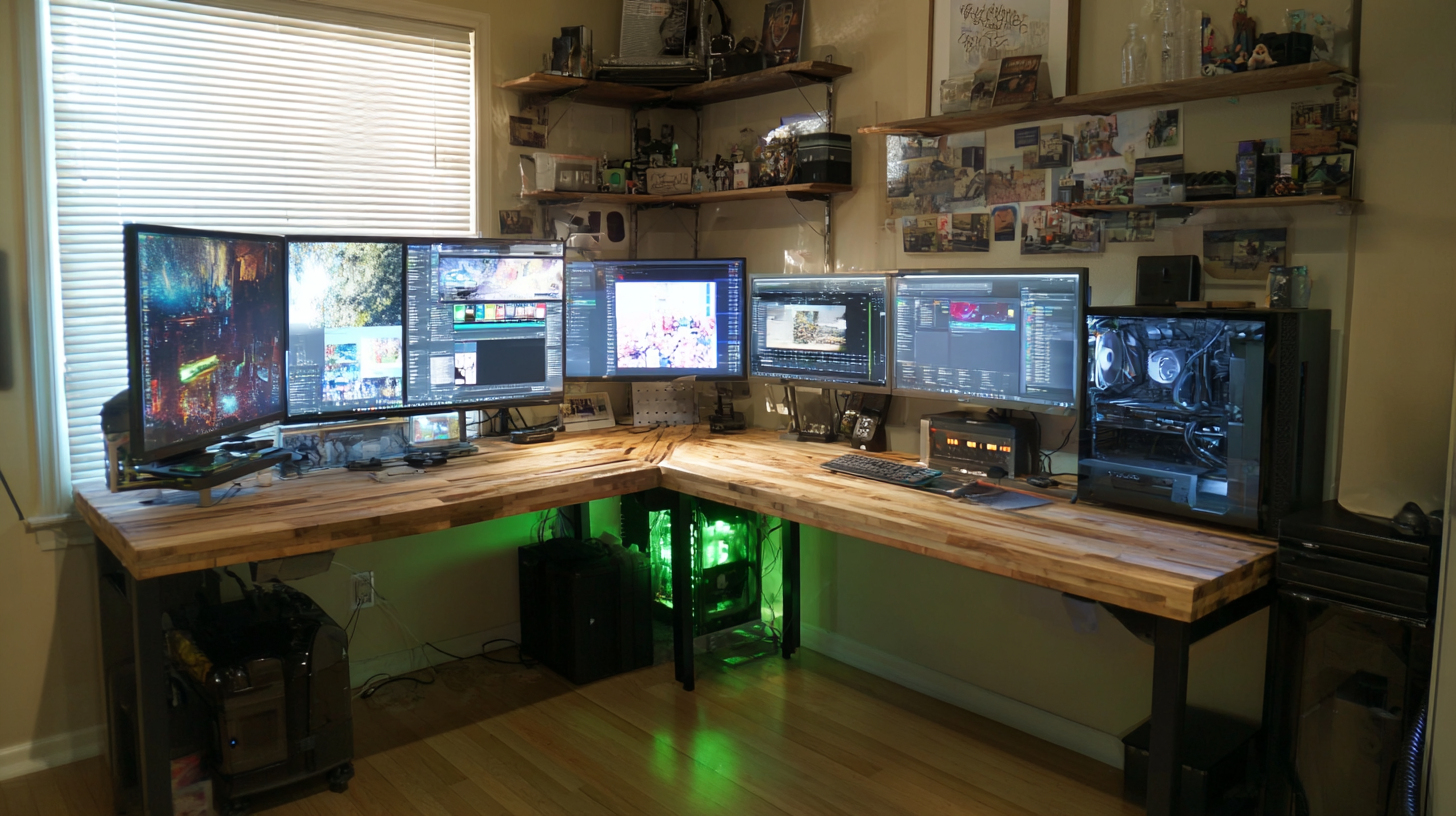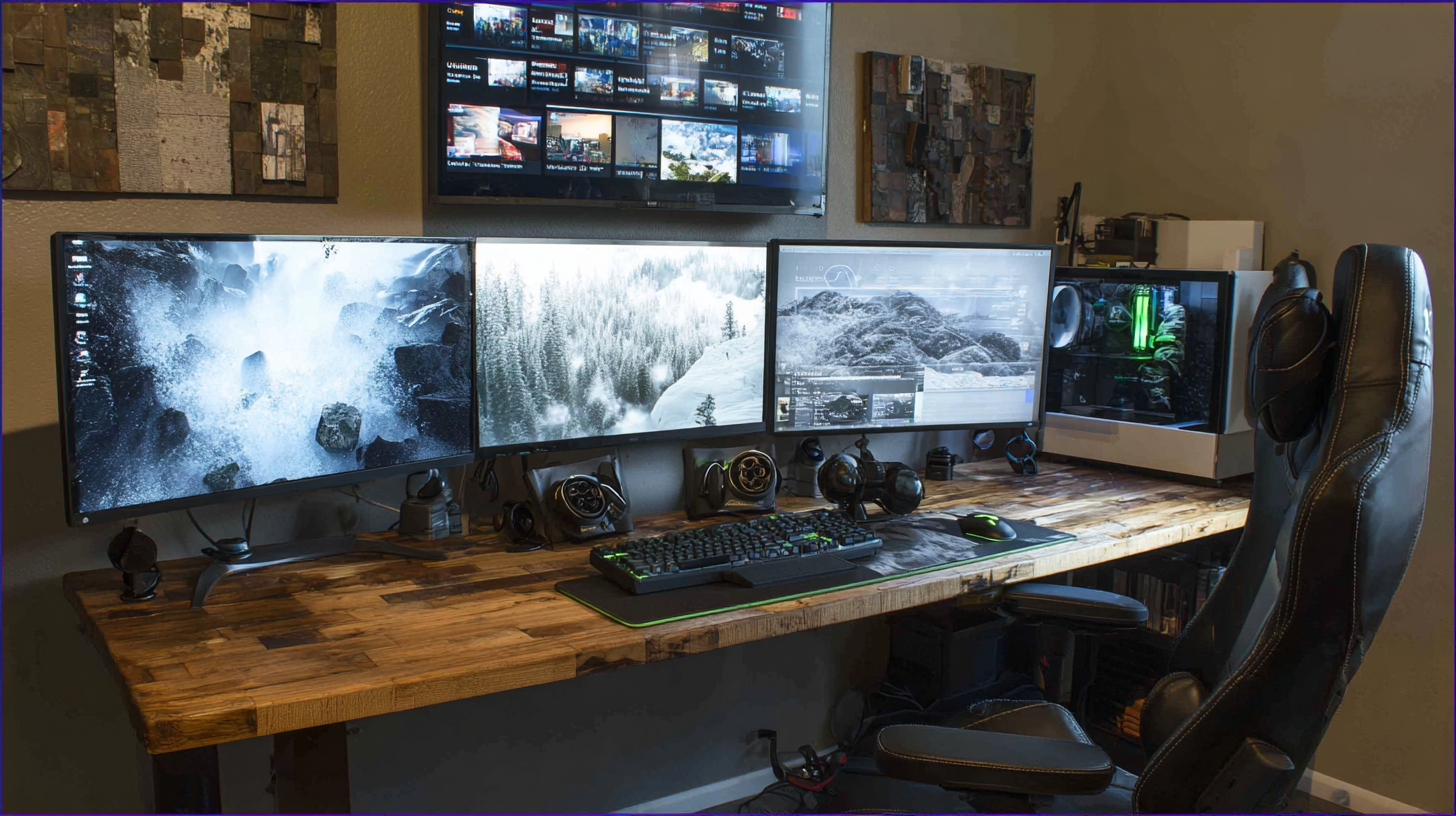As remote work continues to become a staple of modern professional life, the significance of a well-designed home office cannot be overstated. A recent report by Global Workplace Analytics indicates that over 30% of the U.S. workforce is now working remotely, making the choice of a suitable workspace more crucial than ever. Central to this setup is the "Computer Desk," which not only serves as the primary workstation but also plays a pivotal role in enhancing productivity and comfort.
 According to a study by Steelcase, a well-organized and ergonomically designed desk can reduce workplace fatigue by as much as 30%, emphasizing the need to select a desk that meets both functional and aesthetic demands. In this blog, we'll explore the various factors to consider when choosing the best computer desk for your unique home office needs, ensuring you create an environment conducive to success.
According to a study by Steelcase, a well-organized and ergonomically designed desk can reduce workplace fatigue by as much as 30%, emphasizing the need to select a desk that meets both functional and aesthetic demands. In this blog, we'll explore the various factors to consider when choosing the best computer desk for your unique home office needs, ensuring you create an environment conducive to success.
When selecting the perfect computer desk for your home office, understanding your space is crucial. According to a report by the Office for National Statistics, in 2022, remote work continued to rise, with approximately 40% of employees in the UK working from home at least part-time. This shift highlights the importance of designing an efficient workspace that accommodates both functionality and comfort, particularly as many individuals spend upwards of 8 hours a day at their desks.
Start by assessing your room dimensions; a common recommendation is to allow for at least 36 inches of clearance around the desk to facilitate movement. Furthermore, with an ergonomic layout, the desk height should align with your elbow when seated at a 90-degree angle, promoting good posture and reducing the risk of musculoskeletal disorders. A study from the American Chiropractic Association indicates that improper desk ergonomics can lead to chronic pain for over 80% of office workers. Therefore, when choosing a desk, consider models adjustable for height to create a personalized workspace that supports both standing and sitting.

Prioritizing ergonomics and space will not only enhance your productivity but also protect your health in the long run.
When selecting the ideal computer desk for your home office, it’s essential to consider various types and their respective pros and cons. For instance, a modern floating desk can be a game changer for those with limited space. These desks not only maximize floor space but also provide a sleek, organized workstation that enhances productivity. The minimalist design often includes hidden storage options, making it a stylish choice for a clutter-free environment.
On the other hand, sit-stand desks have gained popularity for their ergonomic benefits. Allowing you to alternate between sitting and standing, these desks can help reduce fatigue and promote better posture during long working hours. However, it's important to note that they can be more expensive compared to traditional desks.
When choosing a desk, consider your specific needs and workspace limitations. Tips to keep in mind include measuring your available space beforehand, evaluating the desk's adjustability features, and ensuring it complements your overall home office aesthetic. Prioritize functionality to create an efficient work environment that fosters creativity and focus.
| Desk Type | Pros | Cons | Best For |
|---|---|---|---|
| Traditional Desk | Classic design, ample surface area | Can be bulky, may lack modern features | Standard home office setup |
| Standing Desk | Promotes better posture, adjustable height | May cause fatigue if used for long periods | Health-conscious workers |
| Corner Desk | Maximizes space, unique shape | Limited workspace, may feel cramped | Small home offices |
| L-Shaped Desk | Spacious, provides multiple work zones | Requires more room, heavier to move | Shared or dual workspaces |
| Floating Desk | Space-saving, minimalist design | Limited surface area, may lack storage | Minimalist home offices |
When selecting the best computer desk for your home office, the material of the desk plays a crucial role in ensuring both durability and style. Different materials offer unique benefits and aesthetic qualities that can significantly impact the overall look and functionality of your workspace. For instance, solid wood desks exude a classic charm and robustness, making them perfect for those who prefer a timeless appeal. They not only withstand wear and tear but also add warmth and elegance to any office setting.
On the other hand, metal desks provide a modern and sleek aesthetic, typically paired with glass or laminate surfaces. These materials are often lighter, making them easier to move around, and they can come in various finishes to match your desired décor. Laminate desks, in particular, offer a cost-effective option that’s available in a plethora of designs and colors while being simple to maintain. By understanding the benefits of each material, you can choose a desk that not only fits your workflow needs but also enhances your home office's overall atmosphere.

Choosing the right computer desk for your home office is essential for maximizing productivity and comfort. When evaluating functionality, start by considering the desk size. A spacious surface allows for multiple monitors and essential work materials without feeling cramped, while a design that suits your room's dimensions ensures it doesn’t overwhelm the space. Additionally, adjustable height options can cater to different working preferences, allowing for both sitting and standing positions, which promotes better posture and health.
Storage features are another critical aspect to look for. Desks with built-in shelves or drawers help keep your workspace organized and clutter-free, making it easier to focus on tasks at hand. Cable management options are also beneficial, allowing you to keep wires neatly tucked away, which enhances both aesthetics and safety. Moreover, consider the material and build quality; sturdy materials will ensure longevity and withstand daily use. By thoughtfully assessing these features, you can find a desk that not only meets your needs but also enhances your overall work experience.
When selecting the best computer desk for your home office, budgeting smartly is essential to finding a piece that aligns with your financial goals. Start by determining a reasonable price range based on your overall budget and how frequently you’ll use the desk. Remember, investing in quality doesn’t always mean spending a fortune. Look for desks that offer durability and functionality within your price range.
One tip to consider is to explore different styles and materials that could affect the price. For instance, desks made from particle board can be more budget-friendly than solid wood options, but still provide the necessary sturdiness for your workspace. Additionally, don’t overlook second-hand options or clearance sales, which can yield high-quality furniture at a fraction of the cost.
As you assess your needs, prioritize features that promote efficiency and comfort. A desk with built-in storage or adjustable height can enhance your productivity without breaking the bank. By focusing on these elements, you’ll find a desk that meets your requirements while remaining budget-conscious, ensuring your home office is both functional and financially sustainable.
